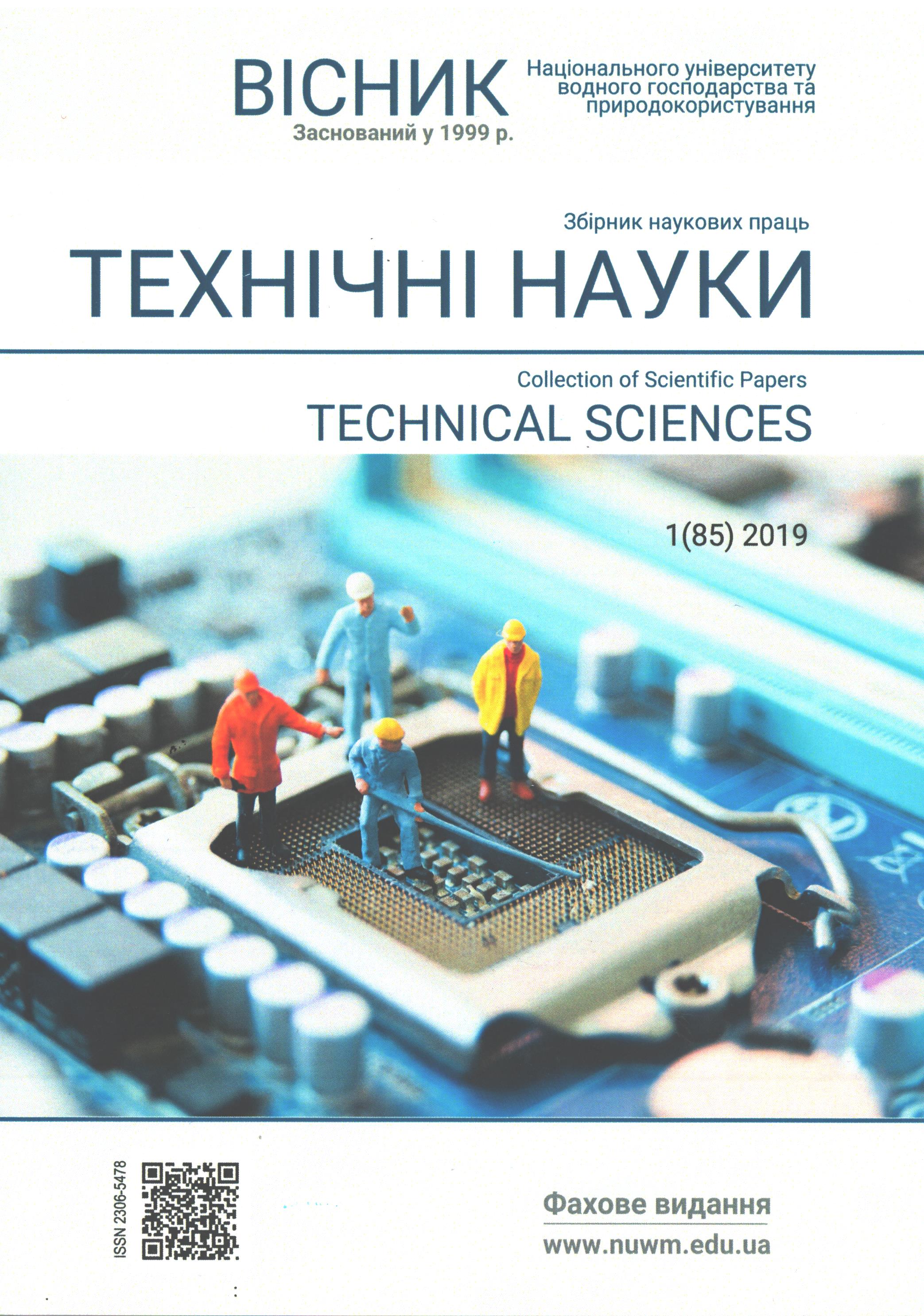PROVIDING ENVIRONMENTAL SAFETY DISINFECTION OF DRINKING WATER BY CLORINATION (FOR EXAMPLE KHARKOV)
DOI:
https://doi.org/10.31713/vt1201910Keywords:
ecological safety, disinfection of water, chlorination, drinking water, human healthAbstract
At the moment, there has been a tense situation with providingUkrainian population with benign drinking water. Unlike Europeancountries, in Ukraine and today, the traditional method of chlorinationis still widely used to disinfect tap water, the most economical andeffective method of disinfection of drinking water in comparison withany other well-known methods. The main criterion for drinking waterquality is its impact on human health. The problem of disinfection ofdrinking water by chlorination method in Ukraine, using the exampleof Kharkiv, was analyzed in the article. The main disadvantage ofchlorination is the formation of so-called trihalomethanes and dioxinswere proved. Unfortunately, in the process of decontamination ofdrinking water, dioxins are not controlled and not degraded, whichgives an occasion to say that these poisons come into the populationwith drinking water. This greatly increases the risk of variousdiseases, including oncological ones. Chlorine is practically the onlyreagent capable of protecting water from bacteria and microbes notonly at the time of filtration, but also during its passage through tapwater pipes.But unlike in Ukraine, European countries are concerned aboutminimizing the harmful effects of chlorine application. There are twomain methods of solving the problem of the formation of by-productsduring chlorination: the use of combined methods of decontamination(to reduce the amount of chlorine used); the preliminary removal oforganic impurities before chlorination. To reduce the amount ofchlorine involved in the process of disinfecting water, along withchlorination, apply ozonization, or other disinfectants and UVtreatment. The technological scheme of disinfection of tap water withsodium hypochlorite with the further treatment of water withultraviolet was proposed. Operating costs for two methods ofdisinfection of drinking water were comparative.References
Сафранов Т. А. Екологічні основи природокористування : навчальний посібник для студентів вищих навчальних закладів. Львів : “Новий Світ-2000”, 2003. 248 с.
Доан С., Бондаренко В. та ін. Характеристика вірусного забруднення водопровідної води. Стандартизація, сертифікація, якість. № 4.2003.
Результати аналізів води у Харкові [«МАМА-86-Харків»]. URL: http://www.mama-86.org/images/attachments 195/Poster_kharkov_voda.pdf. (дата звернення: 15.07.2019).
Употребление хлорированной воды вызывает тяжелейшие врожденные дефекты. NT – INFORM. URL: http://www.rsci.ru/science_news/149581.php. (дата звернення: 15.07.2019).
Studies in Environmental Science 12 Water supply and Health. Edited by H. van Lelyveld, B.C.J. Zoeteman. ELSEVIER, 1981.
Twort A. C., Law F. M., Crowley F. W., Ratnayaka B. B. Water supply, 1996.
Сталинская И. В., Калашник Н. А. Техногенные потоки диоксинов как экологическая опасность: обзор ситуации в Украине. Инновационные пути решения актуальных проблем базовых отраслей, экологии, энерго- и ресурсосбережения : сборник трудов ХХІV Межд. науч.-практ. конф. (6-10 июня 2016 года). Харьков : ГП «УкрНТЦ «Энергосталь», С. 57–64.
Варнавська I. В. Заборонені та непридатні до використання пестициди і агрохімікати: стан та проблеми. Вісник НУВГП. Технічні науки : зб. наук. пр. Рівне : НУВГП, 2007. Вип. 3 (39). С. 34–40.
Как очищают воду в мире. URL: http://ecoenergy.org.ua/tehnologii/kak-ochishhayut-vodu-v-mire.html (дата звернення: 15.07.2019).
Харківводоканал комунальне підприємство. Джерела водопостачання. URL:https://vodokanal.kharkov.ua/content watersupply (дата звернення: 15.07.2019).
Diadin D., Celle-Jeanton H., Crini N., Loup C., Steinmann M., Vystavna Y., Huneau F., Vergeles Y. Distribution of persistent organic pollutants and trace metals in surface waters in the Seversky Donets River basin (Eastern Ukraine) / Proceedings of EGU General Assembly, 2017.
ДСанПіН «Вода питна. Гігієнічні вимоги до якості води централізованого господарсько-питного водопостачання».
REFERENCES:
Safranov T. A. Ekolohichni osnovy pryrodokorystuvannia : navchalnyi
posibnyk dlia studentiv vyshchykh navchalnykh zakladiv. Lviv : “Novyi Svit-2000”, 2003. 248 s.
Doan S., Bondarenko V. ta in. Kharakterystyka virusnoho zabrudnennia vodoprovidnoi vody. Standartyzatsiia, sertyfikatsiia, yakist. № 4. 2003.
Rezultaty analiziv vody u Kharkovi [«MAMA-86-Kharkiv»]. URL:
http://www.mama-86.org/images/attachments 195/Poster_kharkov_voda.pdf. (data zvernennia: 15.07.2019).
Upotreblenіe khlorіrovannoi vodу vуzуvaet tiazheleishіe vrozhdennуe defektу. NT – INFORM. URL: http://www.rsci.ru/science_news/149581.php. (data zvernennia: 15.07.2019).
Studies in Environmental Science 12 Water supply and Health. Edited by H. van Lelyveld, B.C.J. Zoeteman. ELSEVIER, 1981.
Twort A. C., Law F. M., Crowley F. W., Ratnayaka B. B. Water supply, 1996.
Stalіnskaia І. V., Kalashnіk N. A. Tekhnohennуe potokі dіoksіnov kak еkolohіcheskaia opasnost: obzor sіtuatsіі v Ukraіne. Іnnovatsіonnуe putі reshenіia aktualnуkh problem bazovуkh otraslei, еkolohіі, еnerho- і resursosberezhenіia : sbornіk trudov KhKhIV Mezhd. nauch.-prakt. konf. (6-10 іiunia 2016 hoda). Kharkov : HP «UkrNTTs «Еnerhostal», S. 57–64.
Varnavska I. V. Zaboroneni ta neprydatni do vykorystannia pestytsydy i ahrokhimikaty: stan ta problemy. Visnyk NUVHP. Tekhnichni nauky : zb. nauk. pr. Rivne : NUVHP, 2007. Vyp. 3 (39). S. 34–40.
Kak ochyshchaiut vodu v myre. URL: http://ecoenergy.org.ua/tehnologii/kak-ochishhayut-vodu-v-mire.html (data zvernennia: 15.07.2019).
Kharkivvodokanal komunalne pidpryiemstvo. Dzherela vodopostachannia. URL: https://vodokanal.kharkov.ua/content/watersupply (data zvernennia: 15.07.2019).
Diadin D., Celle-Jeanton H., Crini N., Loup C., Steinmann M., Vystavna Y., Huneau F., Vergeles Y. Distribution of persistent organic pollutants
and trace metals in surface waters in the Seversky Donets River basin
(Eastern Ukraine) / Proceedings of EGU General Assembly, 2017.
DSanPiN «Voda pytna. Hihiienichni vymohy do yakosti vody tsentralizovanoho hospodarsko-pytnoho vodopostachannia».

